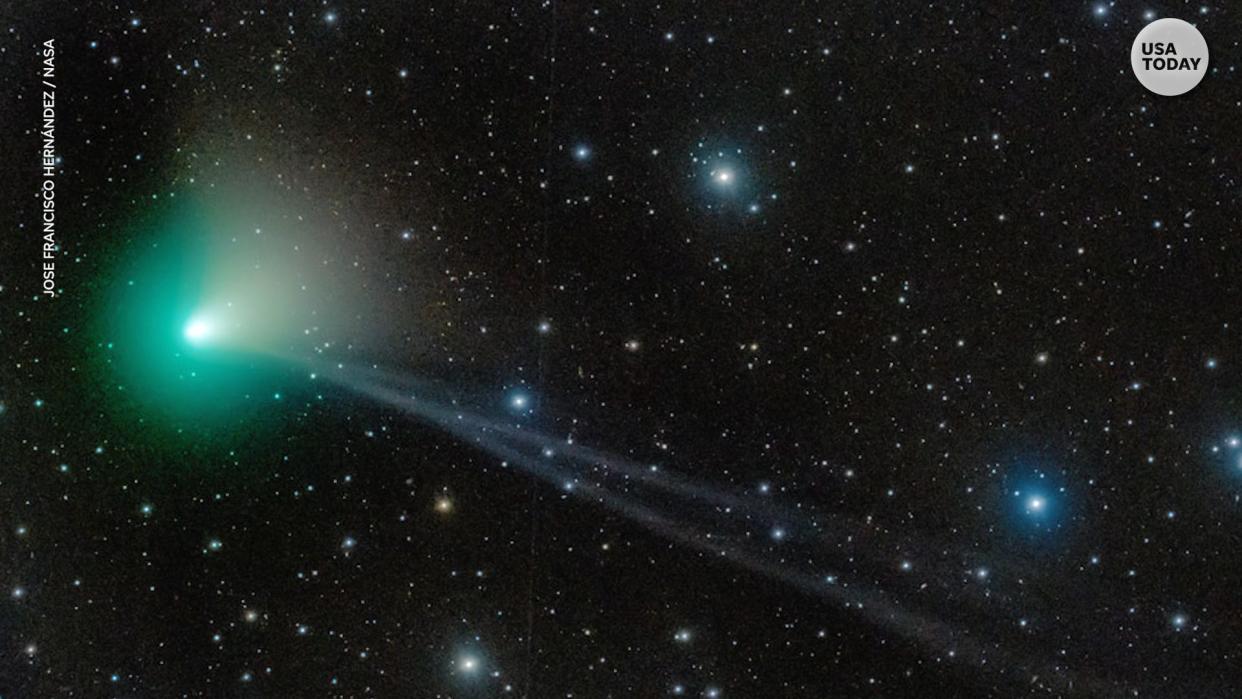Last time this green comet was visible, humans used stone tools. How to see it in Indiana.

A comet that hasn't been visible from Earth since early humans and Neanderthals were using crude stone tools to hunt is passing through our solar system. Experts say the best time to catch this once-in-a-civilization event will happen beginning this week.
The comet, designated C/2022 E3 (ZTF), was first sighted in March 2022 inside the orbit of Jupiter, according to NASA's Jet Propulsion Laboratory, which indicated the comet's last arrival near Earth was roughly 50,000 years ago. Scientists at NASA say the comet will make its closest approach to the sun Thursday, and will pass its closest to Earth on Feb. 2.
"Comets are notoriously unpredictable, but if this one continues its current trend in brightness, it'll be easy to spot with binoculars, and it's just possible it could become visible to the unaided eye under dark skies," according to NASA.
The comet will travel to within about 100 million miles of the sun, according to space.com, before making its closest approach to Earth's Southern Hemisphere on Feb. 2, whipping by at a distance of 26 million miles.
How to see the comet without binoculars, a telescope or leaving your couch in Indianapolis and Indiana
On Thursday, the Virtual Telescope Project will host a free livestream of the comet beginning at 11 p.m. EST. You can watch from the project's website or on its official YouTube channel.
In the Northern Hemisphere, stargazers should look for the comet in the morning sky as it travels northwest. The comet should be easier to spot — weather permitting — when the moon is less illuminated during its new moon phase.
More:A newly-discovered green comet is nearing Earth and it may be visible to the naked eye
To find the path of the comet over Indianapolis, you can download a finder chart for C/2022 E3 (ZTF) courtesy of in-the-sky.org, who state the comet's moment of perihelion — the point the comet is closest to the sun — will be visible in the dawn sky, rising at 00:14 (EST) and reaching an altitude of 64° above the eastern horizon before fading from view as dawn breaks around 06:54.
John Tufts covers evening breaking and trending news for the Indianapolis Star. Send him a news tip at JTufts@Gannett.com
This article originally appeared on Indianapolis Star: How and when to watch a rare green comet in Indiana and Indianapolis

